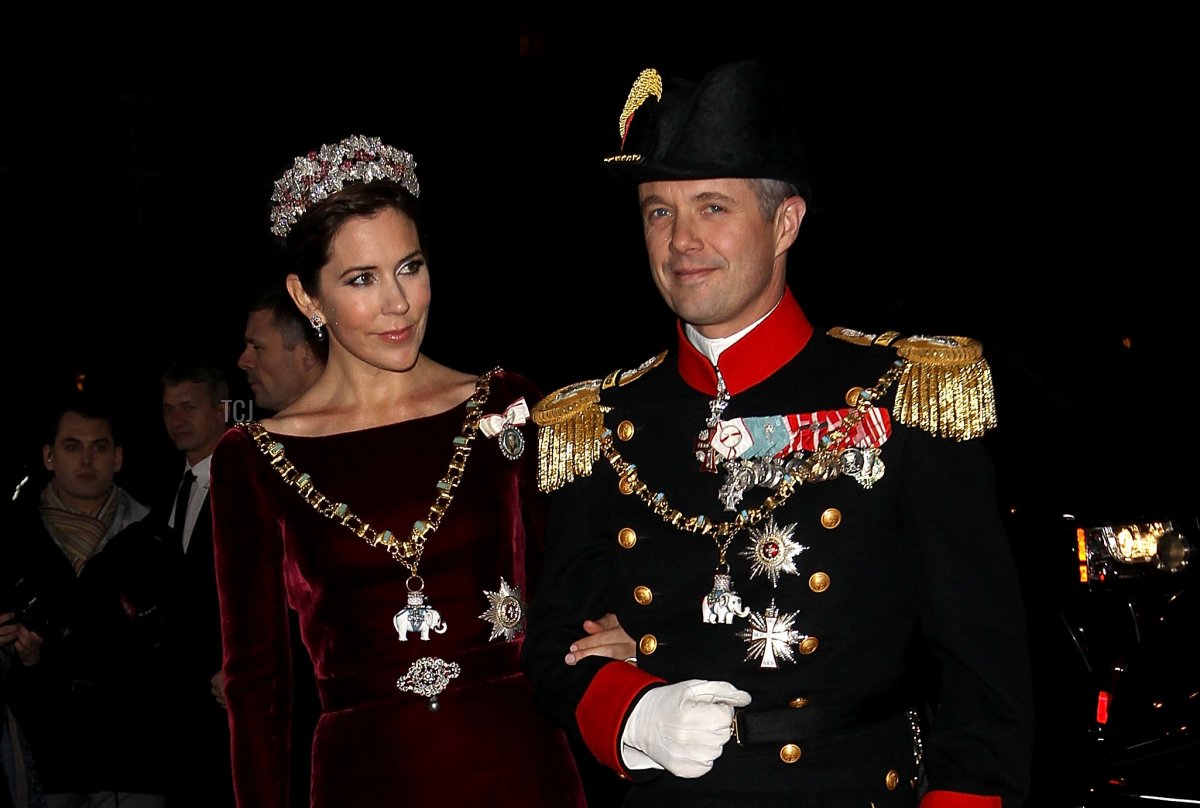
Normally, today would be a particularly sparkly day in the state of Denmark. Sadly, the ongoing pandemic has once again canceled the annual New Year’s levees in Copenhagen, the series of banquets and receptions where the royal family extends greetings for the new year to government officials, diplomats, military officers, and representatives of various patronages and organizations. (The first of the three receptions is also a rare occasion where the royals where the collar of the Order of the Elephant—more on that over here!)
But another canceled levee just isn’t going to stop us from talking tiaras today! To hold us over until the next New Year’s banquet, I’ve got a guide to the tiaras we see most often at the event.
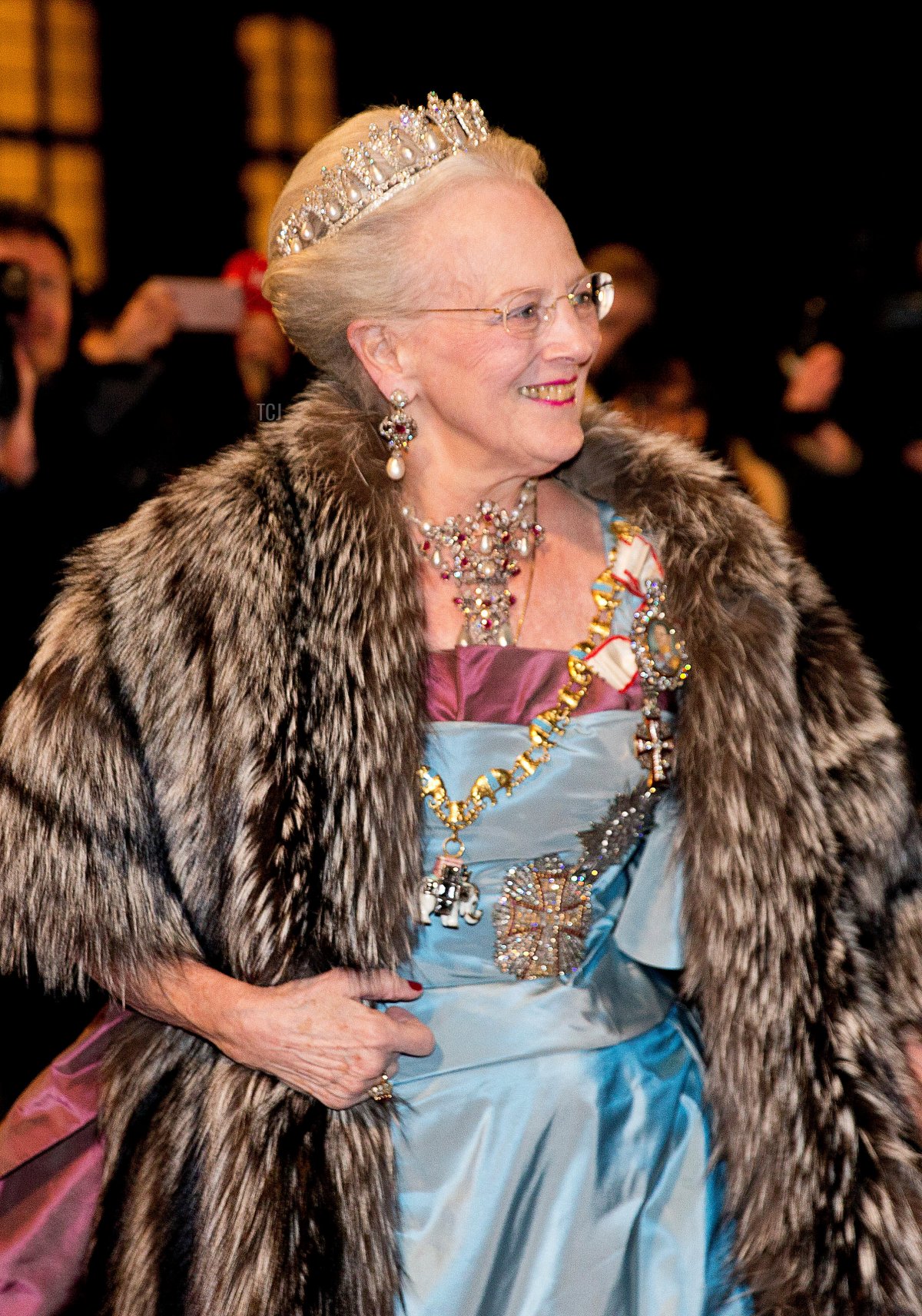
Queen Margrethe II of Denmark often chooses this fantastic heirloom tiara for the first of the New Year’s levees. When Princess Louise of Prussia married Prince Frederik of the Netherlands in 1825, her father, King Friedrich Wilhelm III, gave her this tiara. Her daughter, Louise, took the tiara with when she married the King of Sweden; and then her daughter, also named Louise, took it with her when she married the King of Denmark.
When Queen Louise died in 1926, she placed the tiara in the Danish Royal Property Trust, which means that it belongs to the currently-reigning monarch, not to any individual. Margrethe began wearing the suite after she became queen in January 1972. Above, she wears the tiara for the New Year’s reception on January 1, 2017.
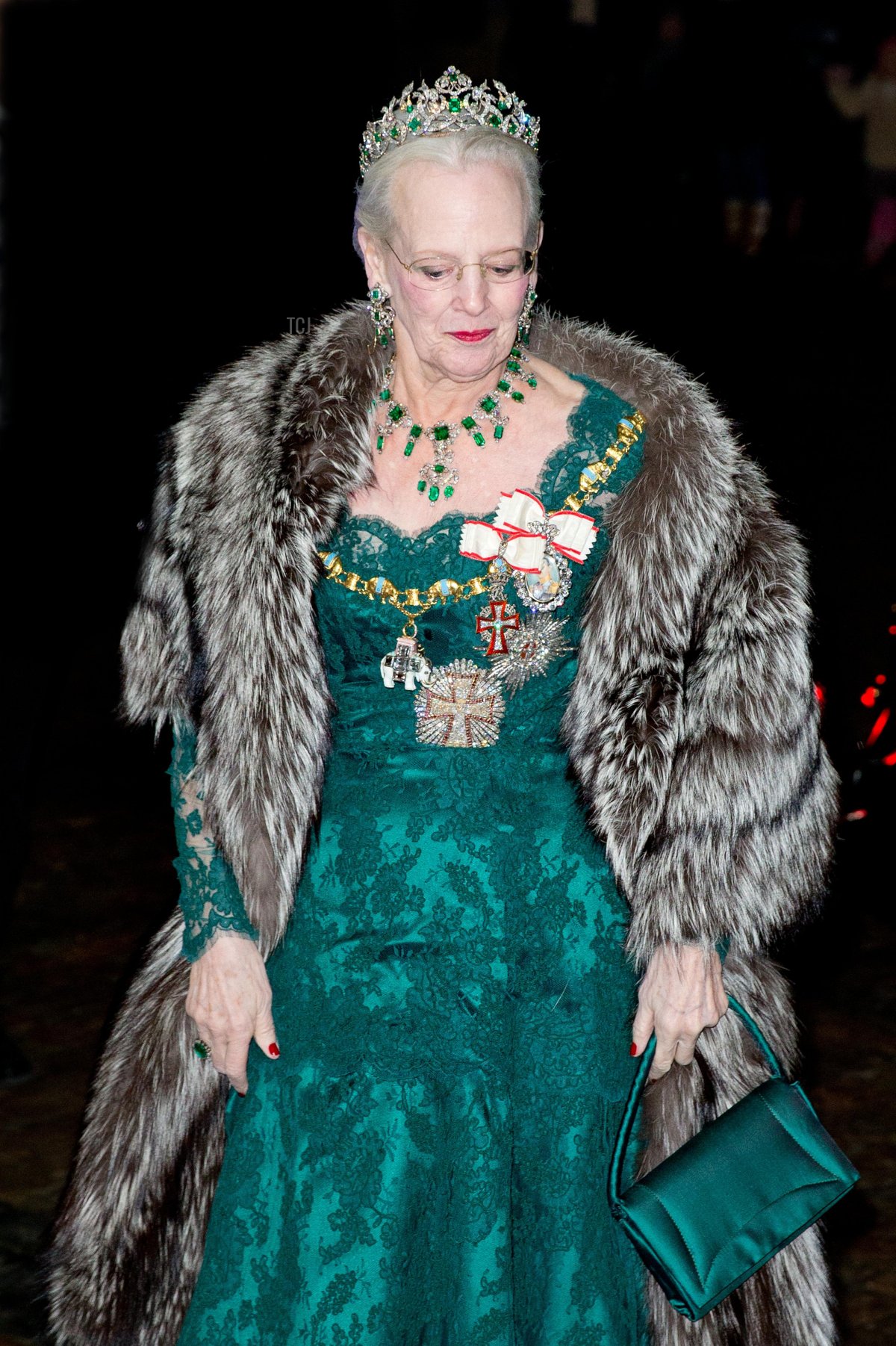
The Danish Emerald Parure Tiara
Queen Margrethe’s other favorite tiara for the New Year banquet is this diamond and emerald jewel. Arguably the grandest tiara in Margrethe’s repertoire, the emerald tiara is a part of the Danish crown jewels. It was given to Queen Caroline Amalie as an anniversary present by her husband, King Christian VII. But it’s even older than its 1840 creation date: Weisshaupt used emeralds that had belonged Queen Sophie Magdalena and Princess Charlotte, who both lived in Denmark during the eighteenth century.
The tiara’s “crown jewel” distinction means several things: Margrethe does not own it, but has the right to use it whenever she wants; it can’t be taken out of the country; and only queens regnant and consort are allowed to wear it. Margrethe is only the latest in a long line of Danish queens to wear the piece: it’s been used by every single Danish queen since it was made. Above, Margrethe wears the tiara for the banquet on January 1, 2015.
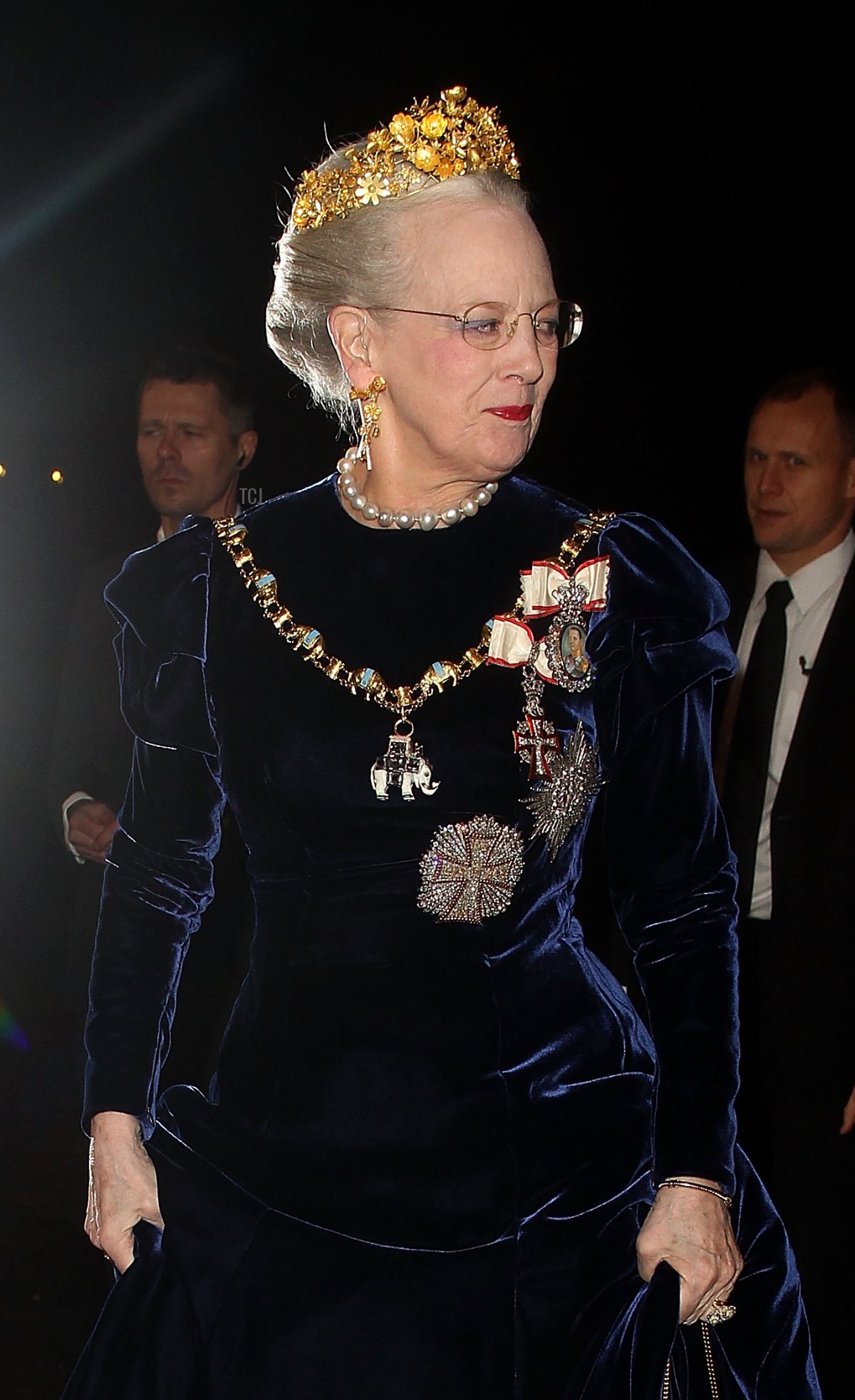
Occasionally, Queen Margrethe surprises us with an unexpected tiara at the New Year’s banquet. On January 1, 2013, she wore this modern gold tiara for the occasion. The tiara is one of the newest additions to Margrethe’s jewelry collection. It was made by Nicolai Appel in 2012 using melted-down gold coins from Greenland. It was Greenland’s gift to Margrethe to mark her ruby jubilee, and the floral tiara also includes small rubies and diamonds scattered among its golden flowers.
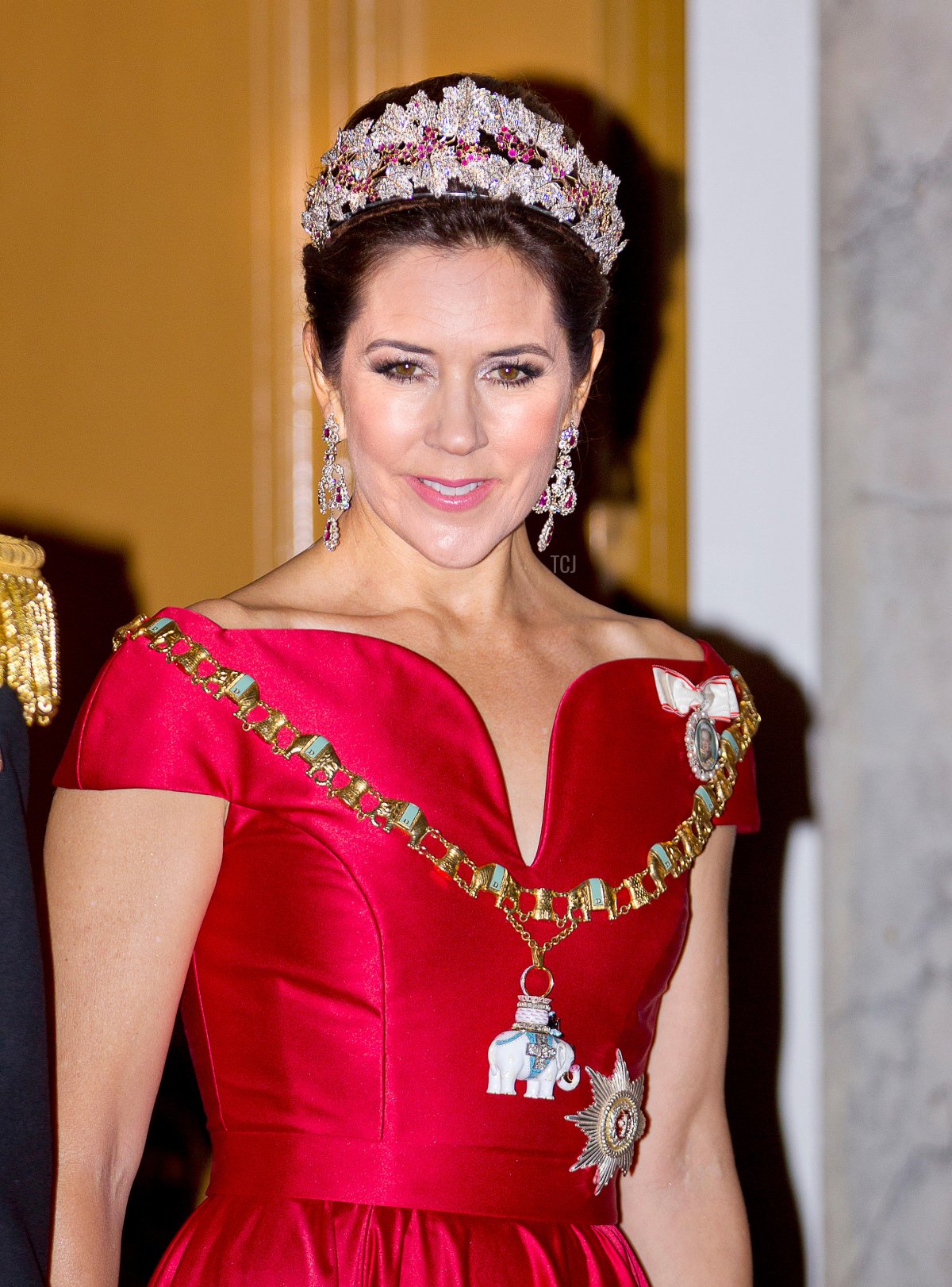
Crown Princess Mary of Denmark has a clear favorite tiara for the first of the New Year’s levees! This tiara and its accompanying parure are some of the most important jewels in Mary’s collection. The set of diamond and ruby jewels was purchased by Jean-Baptiste Bernadotte (later the King of Sweden) for his wife, Désirée Clary, who wore the set at Napoleon and Josephine’s imperial coronation in 1804. The suite became royal jewelry in 1810, when Bernadotte was elected heir to the throne of Sweden.
The jewels were passed through the Scandinavian royal generations, ultimately ending up with Princess Lovisa of Sweden, who married the future King Frederik VIII of Denmark in 1869. Lovisa’s grandmother, Queen Josefina of Sweden, gave her the rubies as a wedding present. They’ve been in Denmark ever since, and Mary has been the exclusive wearer of the tiara and jewels since 2004. Above, she wears the tiara for the New Year’s banquet on January 1, 2018.
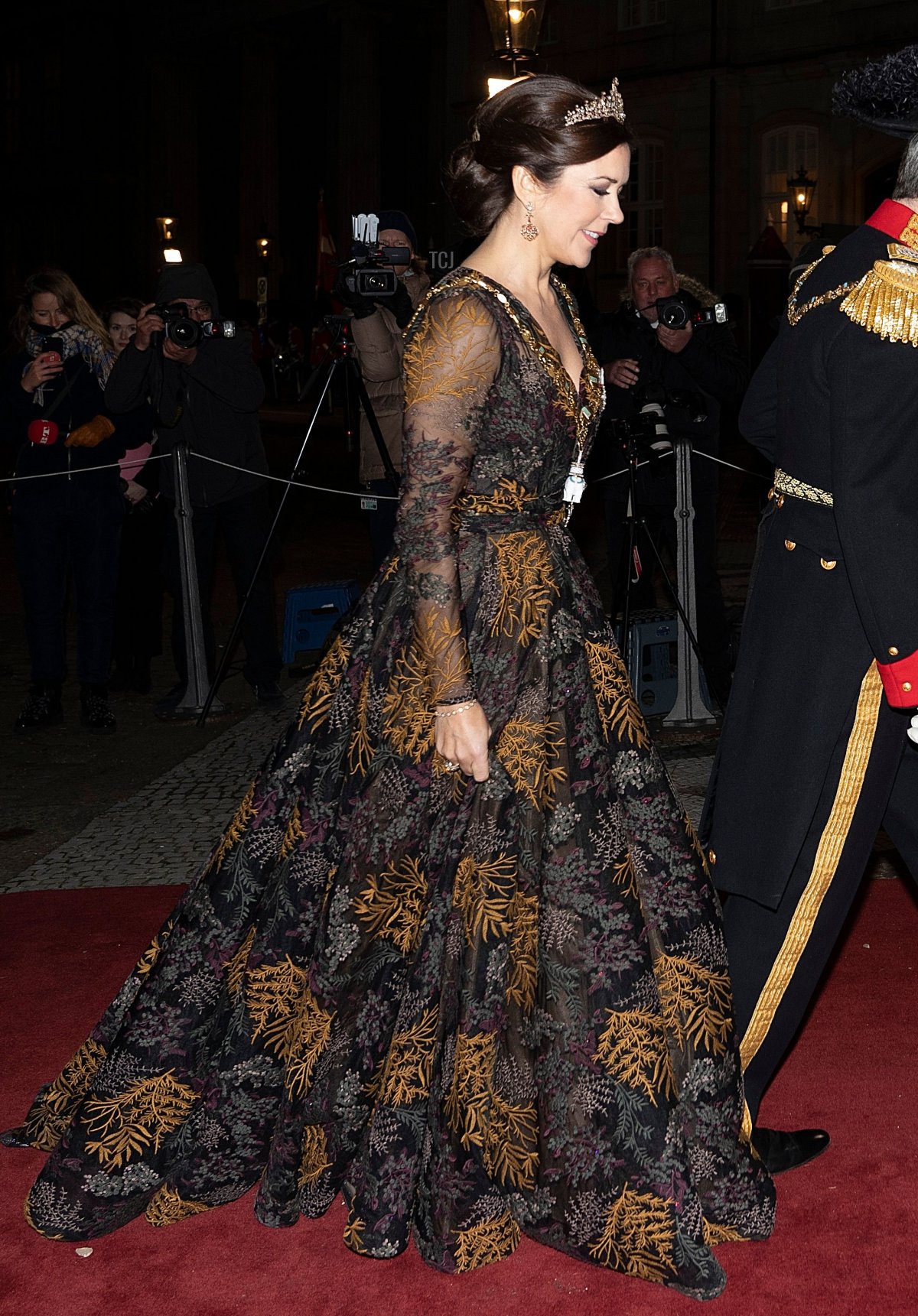
Crown Princess Mary has also occasionally reached for a different tiara for the New Year’s reception. On January 1, 2019, she wore an antique tiara that she reportedly acquired herself. The tiara is an antique jewel, made during the Edwardian era. It’s also convertible—it can be taken off its frame and worn as a necklace. The piece is studded with diamonds, as well as delicate rubies and spinels. Mary reportedly bought the tiara at auction in 2012, and later had a pair of earrings made to match.
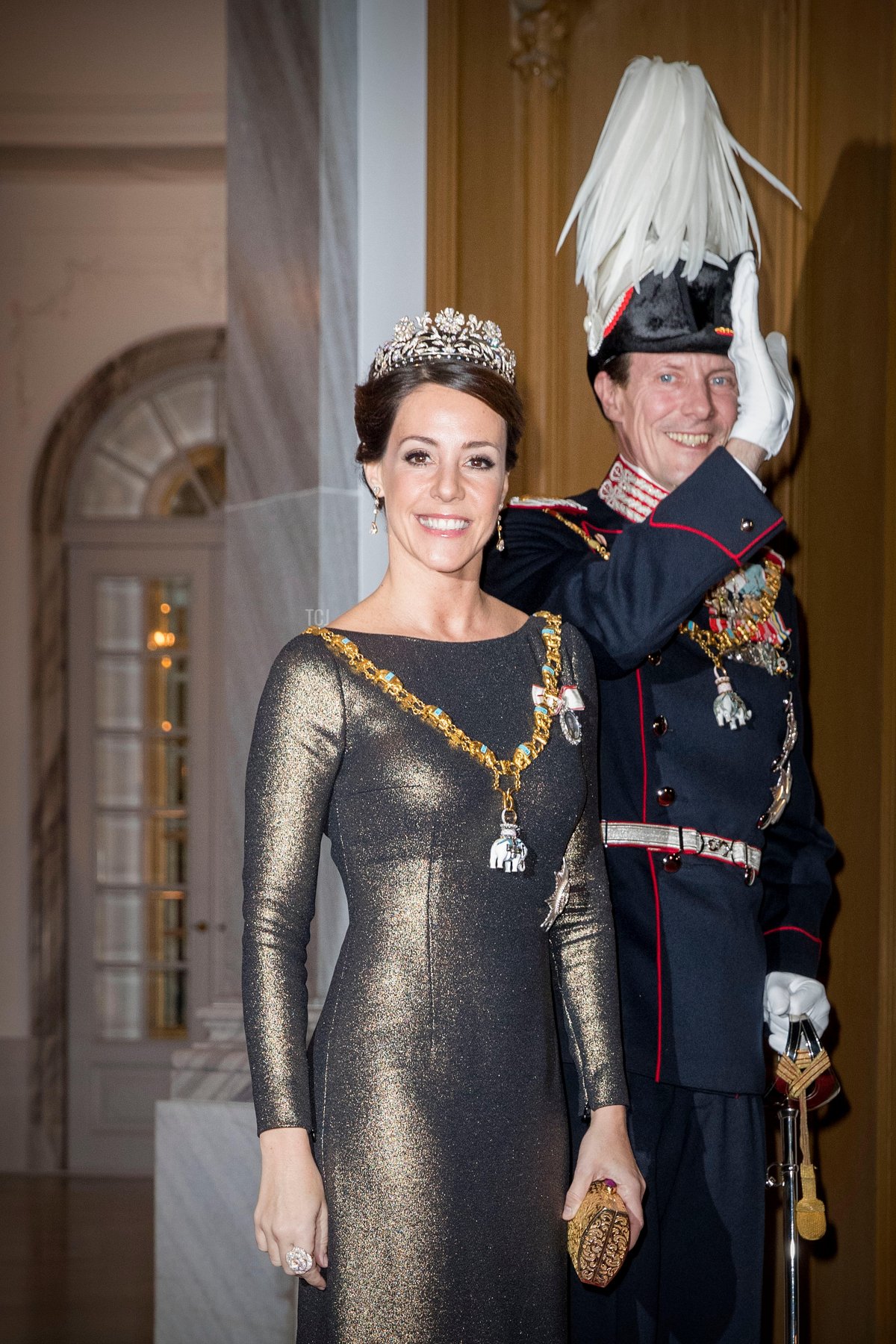
Princess Dagmar’s Floral Tiara
Princess Marie of Denmark has consistently worn one tiara for the New Year’s levee. This detailed diamond floral tiara originally belonged to Princess Dagmar of Denmark, a sister of King Christian X (and King Haakon VII of Norway). The tiara was later passed on to Queen Margrethe II, who wore it for years before offering it as a long-term loan to her daughter-in-law, Princess Marie, in 2008. Since then, it has been Marie’s primary tiara, worn for all sorts of gala occasions. She wears it above at the New Year’s reception on January 1, 2017.
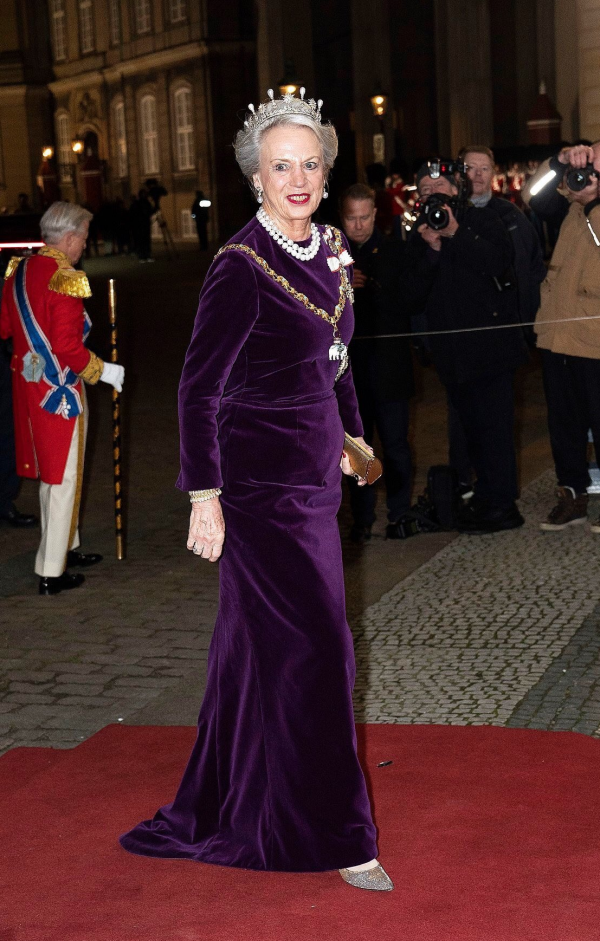
Queen Sofia’s Star and Pearl Tiara
In recent years, Queen Margrethe’s sister, Princess Benedikte, has also made an appearance at the New Year’s banquet. On January 1, 2020, she attended the event wearing this antique diamond and pearl tiara, which comes from her Swedish royal ancestors. The first owner of the tiara was Queen Sofia of Sweden, who was born a princess of Nassau. When she married Oscar II of Sweden in 1857, she received this tiara as a wedding present from her brother, Grand Duke Adolphe of Luxembourg.
When she died in 1913, Sofia left the tiara to another Swedish queen: her daughter-in-law, Victoria of Baden. And when Victoria died in 1930, she was specific about who she wanted to inherit the piece: her granddaughter, Princess Ingrid (who later became Queen Ingrid of Denmark, and was the mother of both Margrethe and Benedikte). Benedikte inherited the tiara from her mother in 2000, and she’s been wearing it for gala occasions ever since.
Leave a Reply
You must be logged in to post a comment.